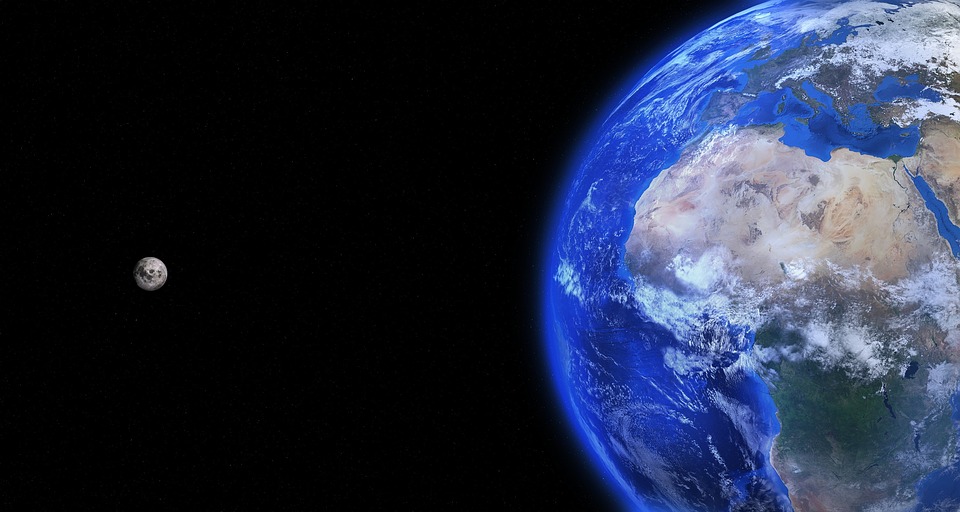Nature’s Warning: How Climate Change is Reshaping Our Planet
In recent years, the stark realities of climate change have emerged not as distant warnings, but as undeniable truths reshaping the intricate systems that govern life on Earth. From melting ice caps to erratic weather patterns, the harbingers of our planet’s plight are evident in the changing landscapes, disappearing species, and burgeoning humanitarian crises. This article seeks to illuminate the profound impact of climate change, revealing how it not only threatens the environment but implicates human societies and economies as well.
The Melting Cryosphere: A Signal of Imminent Change
One of the most visible indicators of climate change is the rapid melting of the cryosphere, which includes glaciers, ice caps, and sea ice. The Arctic is warming at an alarming rate—twice as fast as the global average—with sea ice extent decreasing dramatically. This loss not only affects polar ecosystems but also contributes to rising sea levels, threatening coastal communities around the world.
According to the National Oceanic and Atmospheric Administration (NOAA), global sea levels have risen by approximately eight inches since 1880, with projections suggesting a rise of up to two feet by 2100 if greenhouse gas emissions continue unchecked. This threat is compounded by the phenomenon of thermal expansion, where warmer water occupies more volume. Low-lying island nations face existential threats, while coastal cities like Miami, New Orleans, and Jakarta grapple with increasing flooding and erosion.
Intensified Weather Patterns: Nature’s Fury Unleashed
The impact of climate change is not limited to long-term trends; it also manifests in the severity and frequency of extreme weather events. Hurricanes, heatwaves, droughts, and wildfires are becoming more intense and unpredictable. The intensity of Atlantic hurricanes has risen, with warmer ocean waters providing more energy to storms. For instance, Hurricane Harvey in 2017 dumped unprecedented rainfall on Texas, causing catastrophic flooding and leading to billions of dollars in damage.
Heatwaves are another perilous consequence, inflicting health risks and agricultural losses. Europe experienced a record-breaking heatwave in the summer of 2019, highlighting the urgent need for adaptation strategies to protect vulnerable populations. Droughts in regions like the American West and Sub-Saharan Africa are leading to water shortages, reduced crop yields, and heightened competition over dwindling resources.
Biodiversity Crisis: A Tipping Point for Ecosystems
While climate change poses a multitude of challenges, one of the most pressing is its impact on biodiversity. As habitats transform due to warming temperatures and shifting weather patterns, countless species face extinction. The World Wildlife Fund (WWF) reports that approximately one million species are at risk due to climate change and habitat destruction—an alarming statistic underscoring the urgent need for conservation efforts.
Coral reefs, often called the "rainforests of the sea," are experiencing widespread bleaching as ocean temperatures rise. This not only jeopardizes marine life but also threatens the livelihoods of millions who rely on fishing and tourism related to healthy reef ecosystems. Terrestrial species are also struggling; shifts in their habitats have led to mismatched relationships with pollinators and prey, creating cascades of ecological consequences.
Socioeconomic Ramifications: A Global Challenge
Climate change is not merely an environmental issue; its ramifications extend deep into the fabric of human society. Agricultural systems are under siege, and food security is increasingly at risk. As climate-related disasters strike, socio-economic inequalities are exacerbated—vulnerable populations in developing nations often bear the brunt of climate impacts despite contributing least to the problem.
Moreover, climate change drives migration as people flee uninhabitable environments. The Internal Displacement Monitoring Centre has reported millions displaced by climate-related disasters, and projections suggest that, without concerted climate action, climate refugees could number in the hundreds of millions by 2050. This influx will place additional stress on urban centers and magnify existing social tensions.
Solutions and Resilience: A Path Forward
Despite the grim realities, opportunities exist to combat climate change through systemic shifts and innovations. Transitioning to renewable energy sources, improving energy efficiency, and implementing sustainable land management practices can significantly mitigate emissions. Global agreements such as the Paris Agreement aim to unite nations in limiting global warming and achieving carbon neutrality.
On a community level, local adaptation strategies—such as rebuilding infrastructure to withstand extreme weather, investing in sustainable agriculture, and protecting natural ecosystems—are crucial for resilience. Grassroots movements and technological advancements are emerging as powerful forces in the fight against climate change, signaling hope for a sustainable future.
Conclusion: A Collective Responsibility
Nature is sending us a stark warning of the perilous path ahead. Climate change is not simply an environmental crisis; it is a multifaceted challenge demanding urgent and collective action. As we confront the reality of our rapidly changing planet, it is imperative that individuals, communities, corporations, and governments work together to forge a sustainable future. The well-being of our planet—and ultimately our survival—depends on the choices we make today. The time to act is now, for the cost of inaction is far greater than we can afford.





